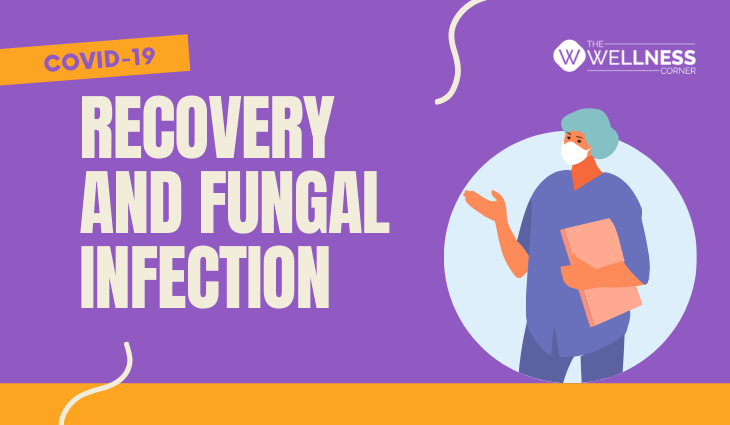Mucormycosis: A Major Concern of COVID-19 Patients in India
The second wave of COVID-19 is finally stabilising across the country, with the number of deaths coming down steadily. Since the first wave hit the country in 2020, studies have shown that the virus creates all kinds of health complications and adversely affects the immune system.
It was widely reported and recognised that the disease comes with symptoms like breathlessness, tiredness, and fatigue for a long time. At present, other pronounced side-effects of COVID-19 treatment are coming to the forefront. One of the post COVID complications is mucormycosis, also known as a black fungus.
What Is Mucormycosis?
Mucormycosis is a rare form of infection. It’s caused by exposure to the mucor mould that is usually found in decaying vegetables and fruits, manure, plants, and soil. It’s omnipresent and present in the air and soil and the mucus and nose of healthy people.
Common symptoms
- Numbness in Nose
- Face Swelling
- Eye swelling
- Redness of eyes
- Excretion of black mucus
- Thrombosis
- Headache
This fungal infection affects the lungs, the brain, and the sinuses. It turns into a life-threatening condition in diabetic and highly immune-compromised individuals, such as people with HIV/AIDS or cancer.
Presently, doctors believe black fungus has an overall mortality rate of 50%. The spread of this infection has become a significant cause of concern across states.
Rajasthan has already declared mucormycosis as an epidemic. And Maharashtra has requested doses of amphotericin B, an antifungal drug, from the Centre.
Are Yellow and White Fungus Causes of Concern?
Delhi recently reported its first case of white fungus, whereby they reported multiple perforations all through the intestine. These fungal infections have become causes of concern as they can have serious adverse impact on health of patients.
Also, these fungal infections are relatively common in rural areas because they are carried by hay, dust, and other such particles.
How Steroids May Cause Fungal Infection
Reports suggest that steroid usage may trigger mucormycosis. The medicines having steroids are life-saving drugs for critically ill patients of COVID-19. Steroids decrease inflammation in the lungs in COVID-19 patients. Also, it may help stop some of the damage when the body’s immune system gets into overdrive to fight off the virus.
The issue is that these steroids may also reduce immunity and increase blood sugar levels in non-diabetic and diabetic COVID-19 patients. This drop-in immunity is the leading cause behind the increasing cases of mucormycosis.
Also Read: - 5 Yoga Asanas to Strengthen Lung Functioning
Excessive Steam Inhalation Leading To Mucormycosis
At least 10 % to 20 % of previously reported cases of mucormycosis were related to burns. Any trauma to the skin or mucous membrane triggers such fungal infections in the proper settings. Excessive steam inhalation may be a factor behind the rising cases of black fungus.
The delicate mucous layer of skin protects you from viruses and bacteria. It is a slimy layer that can get destroyed by excessive amounts of steam. A high temperature of steam inhaled in large amounts damages the mucosa, which is a lining of your airways. Besides, steam inhalation doesn’t help COVID-19 much except offer symptomatic relief in dry cough.
What Puts People With Diabetes At The Highest Risk?
The highest risk of fungal infections is for individuals with a medical history of uncontrolled diabetes or high blood sugar level. Diabetes intensely raises inflammation and subdues the immune system.
Moreover, high blood sugar levels also make it easy for fungi to enter and thrive in the body, causing severe complications. Diabetes also makes patients prone to skin infections. Their bruises take longer to heal, and it forms accessible pathways for the fungus to enter the patient’s body.
In addition, diabetic patients are also vulnerable to facing COVID-19 severity and hospitalisation, which further increases the dangers after COVID recovery. Therefore, you need to monitor blood sugar levels regularly.
Also Read - Resources to Help You Manage Your Immunity & Wellbeing During COVID-19
Can Mucormycosis Be Prevented?
There are a few steps you can take that might help in preventing mucormycosis. And here’s listing out those steps for you:
- Wear a mask if you’re visiting dust-filled construction sites.
- Wear covered shoes, long sleeve shirts, long trousers, and gloves when handling soil, moss, and manure.
- Always maintain personal hygiene, which includes through scrub bath.
- Monitor blood sugar levels after COVID-19 recovery and also if you have diabetic.
- Control hyperglycemia as per doctor’s advice.
Key Takeaways
Black fungus has become a significant cause of worry for patients post COVID-19 recovery, especially in immuno-compromised diabetic patients. Make sure you follow the advice above to mitigate the risk of fungal infection as much as possible.










